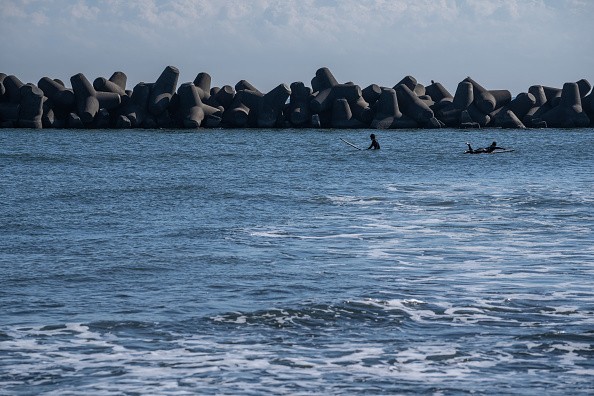Recently, it has been noticed that hundreds of 'sea pickles' are washing up on Oregon coast, causing agitation in the Beaver State. These animals got their name 'sea pickle' from their looks, but they are actually a pyrosome, a "colony" of multi-celled organisms known as zooids.
These creatures grow up to about 60 feet long when packed together, which is large enough for even a human to fit in. But the regular size of a zooid is about the size of a grain of rice.
Their structure is similar to that of other solitary animals. They are directly connected by tissues and mostly move in colonies. Pyrosomes are also referred to as cockroaches of the sea by the national geographics.
Why Are Sea Pickles Showing up in Large Number?
Some divers once encountered a 26 feet long pyrosome and even took photos of it. Researchers described their backbone similarities with humans as closely related than that of a jellyfish, according to USA Today.
According to researchers, these pickles are primarily seen in warm waters and open oceans but are sometimes pushed up north by wave tides, as seen on Alaska's coast in 2017, which was the furthest up north researchers have ever seen.
Recently, a large number of pyrosomes was spotted washed up on the Oregon coast because of the storms in the South Pacific ocean. These pyrosomes were spotted everywhere within the coast but were barely about 2 feet long.
Also Read : 'Sea Pickles' Are Invading The West Coast

Features of Pyrosome
According to Tiffany Boothe, administrator at the Seaside Aquarium in the state, seeing this creature can be quite alarming for new visitors on the coast as they are odd looking.
She also encourage people not to be so scared of them when seen because those washed off to the shore are already dead.
She explained: "If you're interested, pick it up and take a closer look at it. It's not going to harm you since it's not alive anymore; it's just kind of an interesting creature to try to wrap your mind around. As for what they feel like? Kind of jellyfish-like. Gelatinous, rigid and bumpy," according to MSN.

Impacts of Sea Pickle on Marine Environment
Further studies are still to be made on the possible dangers of these animals but so far these pickles haven't been proven to be dangerous as they are said to have no nutritional value on the fishes that feed on them, so its quite difficult to state if their presence is for the good or bad.
Why they appeared that much in the oregon coast and the impact of them appearing far north is still under study.
"These big blooms could have implications in the marine environment that we're just not sure of yet," Boothe said.
Related Article : Millions of Rare 'Sea Pickles' Invade the Pacific
For more news, updates about pyrosomes and similar topics, don't forget to follow Nature World News!
© 2025 NatureWorldNews.com All rights reserved. Do not reproduce without permission.





